
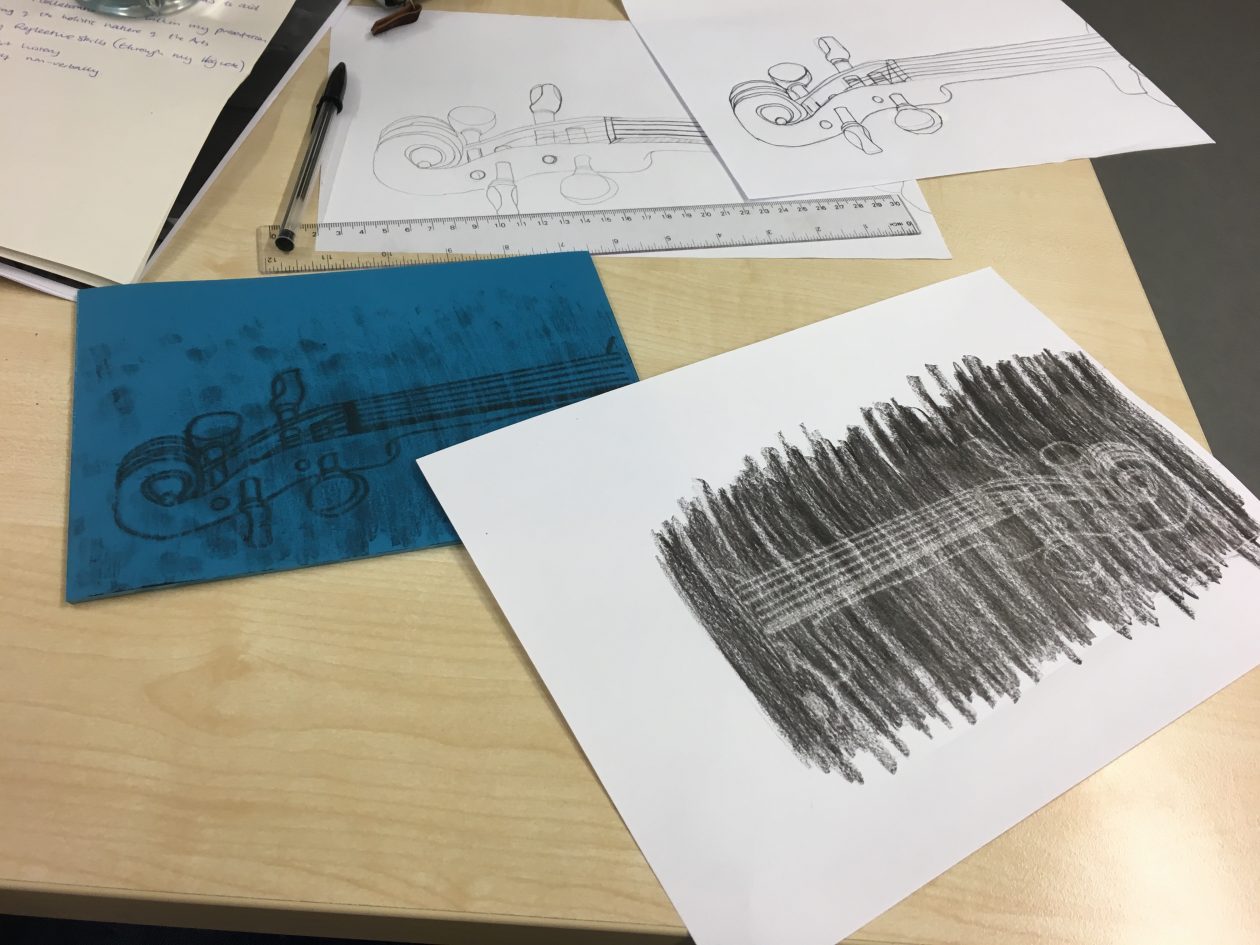
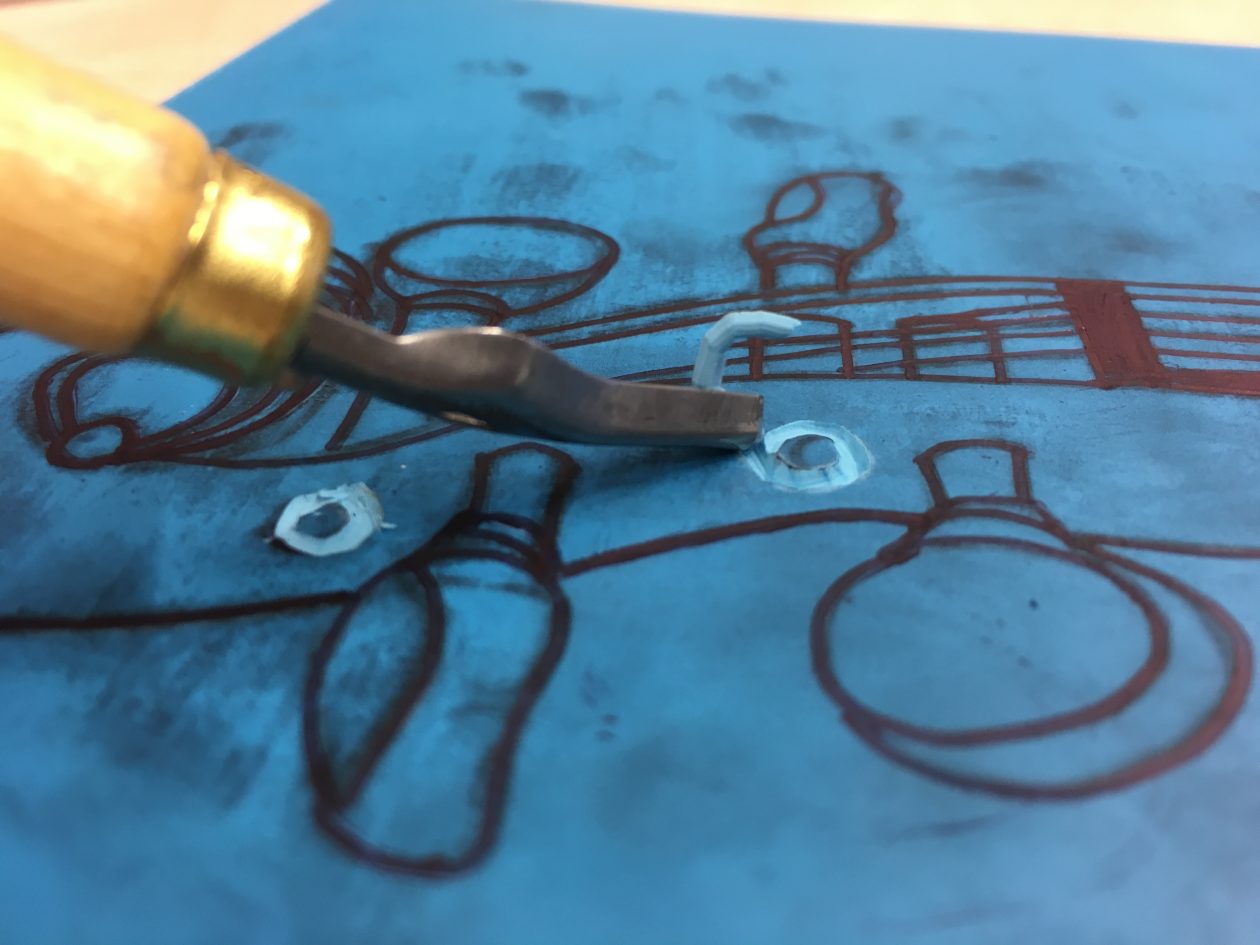
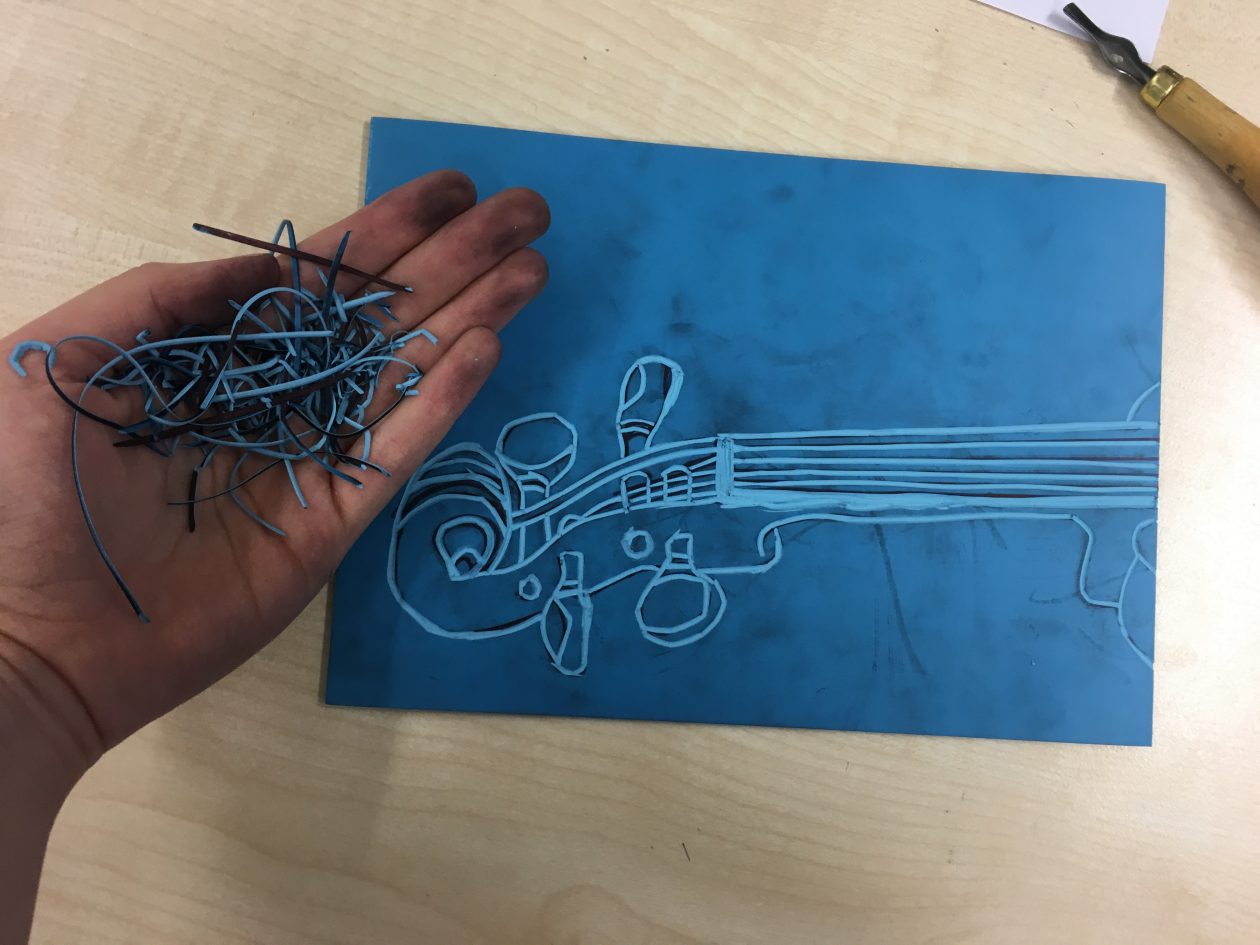

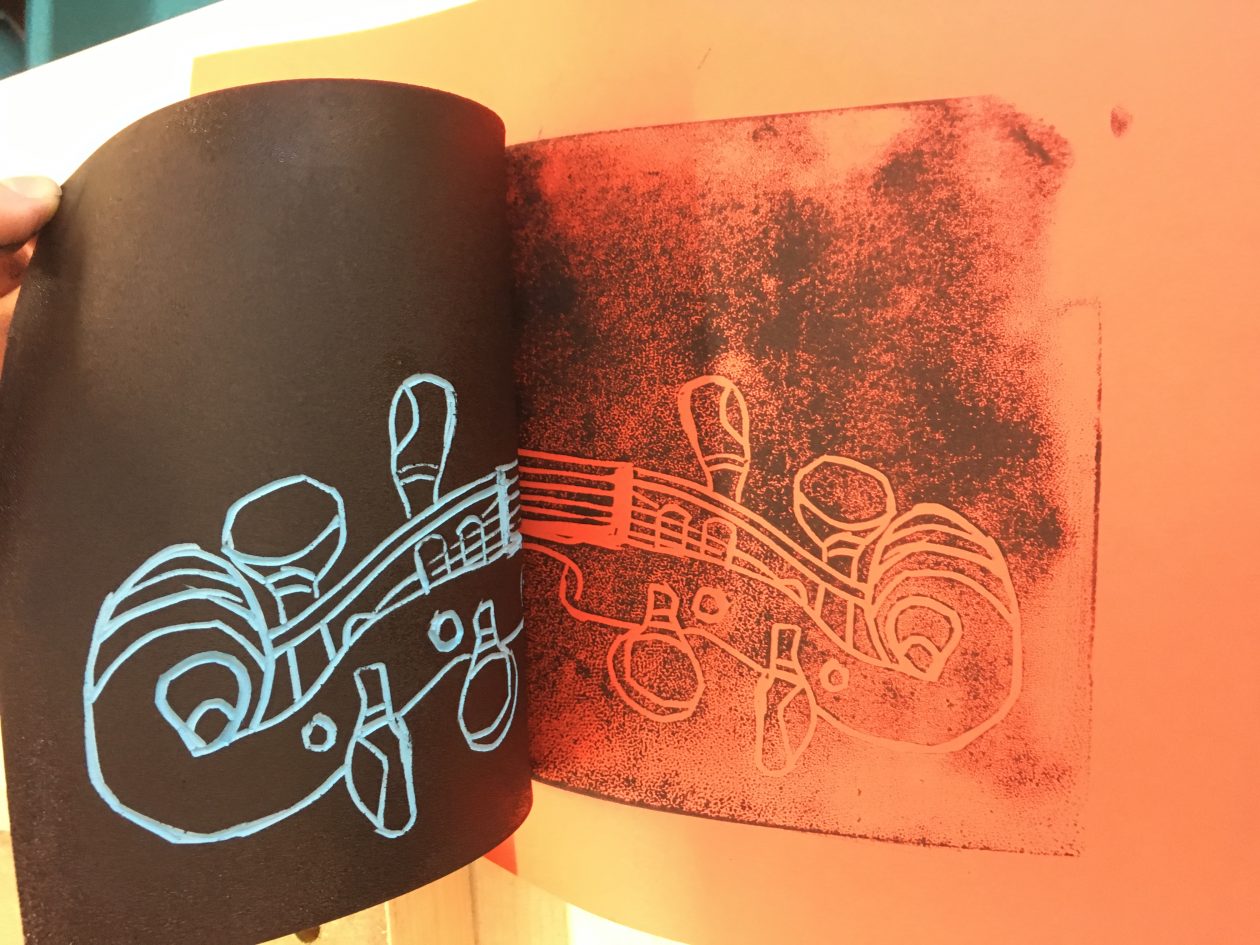
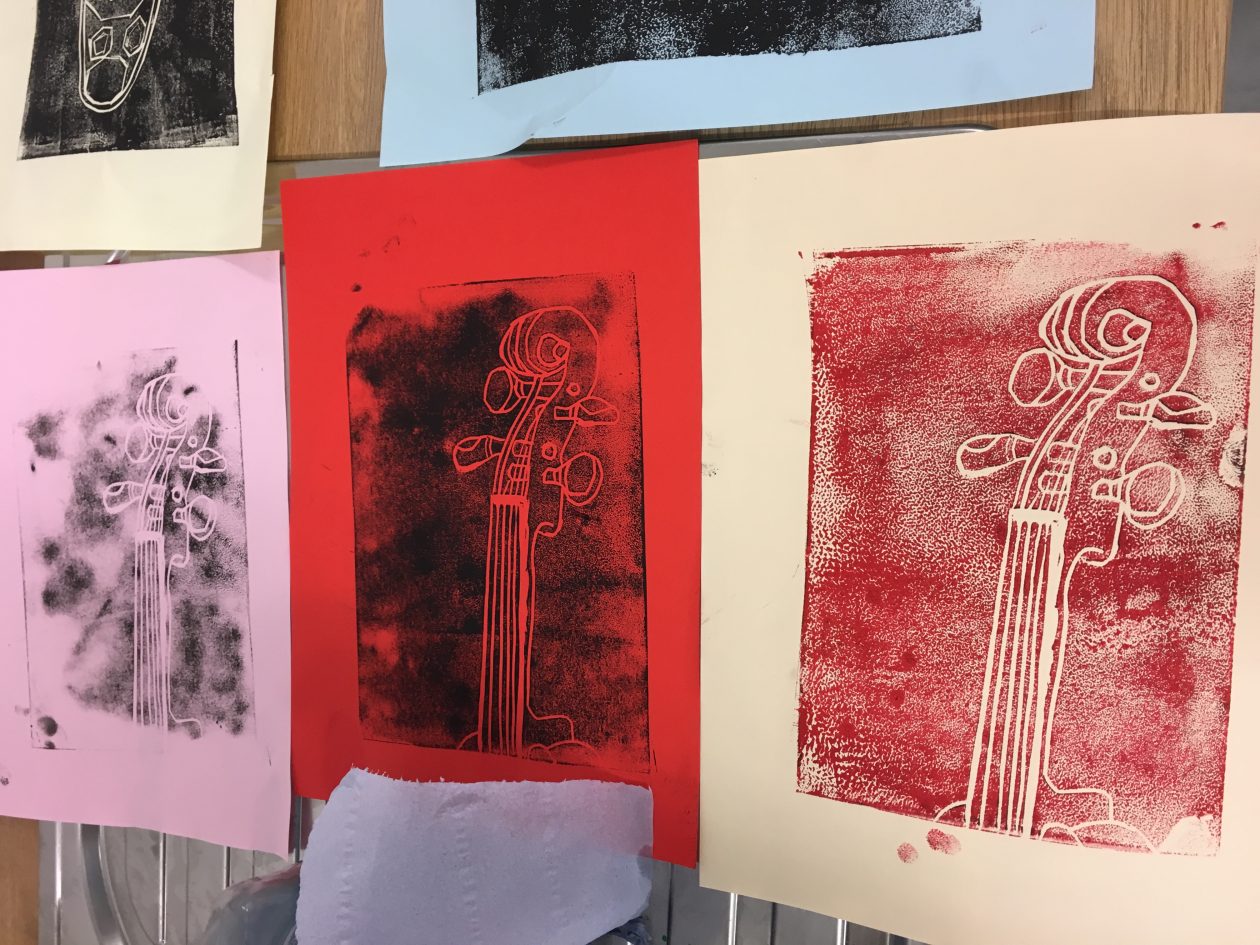
Benefits:
Fine motor skills
Chance to view the Creative Process
Integration of Art into STEM (STEM —> STEAM)
Negatives:
Danger of working with sharp objects, so may only be suitable for upper primary
Rubber tile materials may be costly to fund
During this session I learned that print making is a more extensive process than I originally thought. This led me to think about building for progression.
Building for progression allows children to take their time formulating ideas, and strips the pressure of quick-production from the experience.
Children are allowed the invaluable asset of time. Unfortunately, in this day and age, so much is rushed as we expect quick yielding and high results. However, I pose the question of: how can we expect high quality work (from anyone, child or adult) if we do not allow time? If one is not afforded the courtesy of time, they cannot formatively reflect; if one cannot formatively reflect, they stand to gain no beneficial skills and cannot better their work – it becomes a one-shot pass/fail instead of ‘how can I make this better?’
I also considered the print making process as a cross-curricular topic. Print making is also prolifically associated with the printing press and the availability of written language. Therefore, without this art form,we could not appreciate Literacy in the same way. This creates a lesson possibility with a tie between Literacy, Art and History.
After reading the ‘Living Literacy’ chapter (chapter 3) of Slow Print: Literary Radicalism and Late Victorian Print Culture , I further understand the part that Art had to play with making the world literate. Within this chapter, Miller references the community-driven aspect of Literacy, and how print-making had the sole impact on this; without the print making business (founded through and by the Arts), we would not have the printing press and would not have mass Literacy. In this way, the Arts have made a large contribution to making education viable.
There is also the time there objects were pressed on walls, making shapes, that represented a story. This can be seen in caveman hand prints and is another form of Literacy tying in with Art.
Reference: Miller, C. (1974) Slow Print: Literary Radicalism and Late Victorian Print Culture [Online] Available: http://stanford.universitypressscholarship.com/view/10.11126/stanford/9780804784085.001.0001/upso-9780804784085-chapter-4 [Accessed: 04 March 2017].
